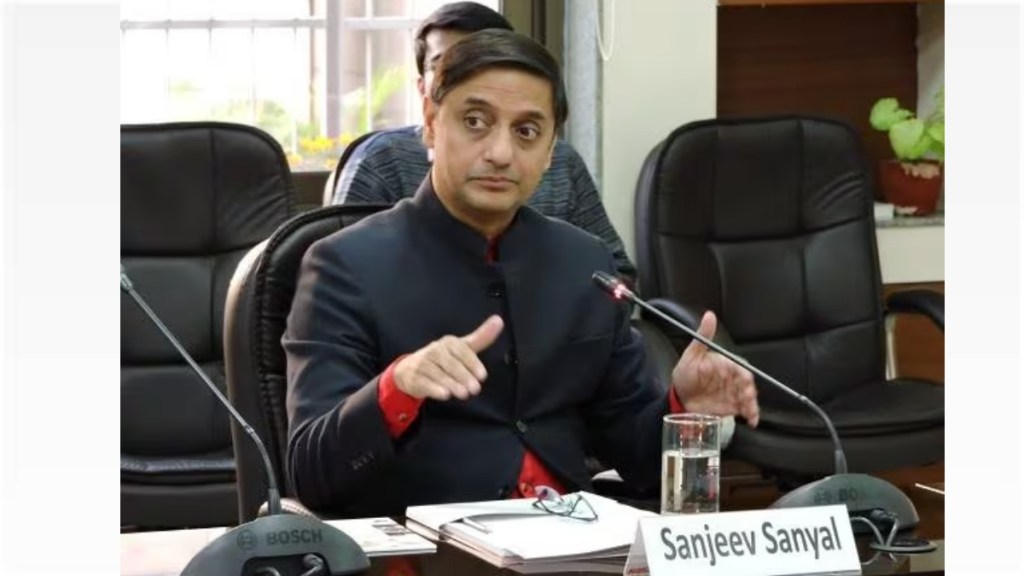By Manish Kumar Tiwary
The recent commentary by Sanjeev Sanyal (a distinguished economist from India, serving on the Economic Advisory Council to the Prime Minister) on the Union Public Service Commission in India and its broader implications for governance and societal aspirations connects well with the discussion on lateral entry as a catalyst for transformation in India’s governance. In my opinion, Mr. Sanjeev Sanyal’s words, “UPSC is a waste of time. Large parts of bureaucracy are dull and boring… Young kids…are wasting their time trying to crack UPSC… (They) should (in spite) dream to be Elon Musk or Mukesh Ambani…” (Sanyal 2024) have been greatly misunderstood. His message emphasizes the beauty and potential of our vast, youthful, and skilled nation. He’s advocating for a broader vision of success and achievement, highlighting the crucial role of industrialists and entrepreneurs as the architects and heroes of our country.
It’s a call to action for us to broaden our ambitions and to cherish and aspire to these roles as much as any other. On the other hand, the Modi government has institutionalized the lateral entry into the government of India through UPSC, in order to make use of the expertise which the lateral entry officers carry with them as a result of their long experience and specialization into a particular domain, which is hard to achieve through the normal recruitment of civil servants. This will, therefore, act as a catalyst to the transformation of governance in India. There are four ways how the above two perspectives can be correlated. Before delving into that, however, let me briefly take you through the significance of lateral entry in India.
Lateral entry into government roles offers several distinct advantages that can enhance the functionality and responsiveness of governance. Firstly, lateral entrants bring with them a wealth of specialized knowledge and skills, filling gaps in the existing workforce. This expertise is particularly valuable in critical sectors such as finance, technology, healthcare, and education, where a nuanced understanding and experience are essential for crafting effective policies. Additionally, these professionals often hail from private sectors or other dynamic environments, equipped with innovative processes, technologies, and management practices that can streamline governance and make it more attuned to the citizens’ needs.
Lastly, the global perspectives that lateral entrants provide can be a significant asset. Their international exposure and experience allow them to introduce global best practices and standards to Indian governance, ensuring that policies not only meet local needs but also align with world-class benchmarks. Together, these advantages suggest that embracing lateral entry could be a strategic move towards more skilled, efficient, and globally informed governance.
Now, let’s come back and understand how the statement by Mr. Sanyal connects with the lateral entry in four major ways. Firstly, Mr. Sanyal encouraged the recognition and value of the contributions of individuals across various sectors, including industrialists and entrepreneurs. Similarly, lateral entry into governance embodies this broader vision by welcoming expertise and skills from the private sector and beyond, showcasing a multifaceted approach to achieving national success including public-private partnership.
Secondly, just as Mr. Sanyal’s commentary seems to advocate for valuing roles outside the conventional civil services as equally prestigious and critical for the country’s progress, lateral entry promotes the idea that excellence and leadership in governance can also come from outside the traditional UPSC recruitment process. Thirdly, the call to embrace and aspire to roles beyond those traditionally associated with UPSC taps into the beauty and potential of India’s young and skilled population. Lateral entry leverages this demographic advantage by opening up senior government positions to talents who can bring fresh perspectives and innovation to the public sector. Finally, just as Mr. Sanyal’s message suggests a reimagining of success and the crucial role of diverse professionals in shaping the country, lateral entry acts as a mechanism to realize this vision by integrating these varied talents into the fabric of governance. It signifies a move towards a more inclusive and dynamic understanding of what it means to contribute to the nation’s development.
The integration of lateral entrants into government roles, while beneficial, is not without its challenges and criticisms. One of the primary concerns is the difficulty of assimilating these individuals into the existing bureaucratic structure, which may be met with resistance from traditional civil servants. This resistance can stem from differences in work culture, leading to issues with acceptance and respect within the existing framework. Moreover, there are significant apprehensions regarding the accountability and transparency of lateral entrants.
Questions about how these individuals are selected, the mechanisms in place to ensure their accountability, and the transparency of their operations necessitate the establishment of clear guidelines and stringent oversight. Another point of contention is the potential mismatch between the short-term results orientation prevalent in the private sector and the long-term commitment required to realize policy impacts within the governmental context. The slow pace of government processes can frustrate lateral entrants accustomed to quicker results, highlighting the need for a balanced understanding of both immediate objectives and long-term goals.
To conclude, lateral entry could be seen as a way to infuse new ideas, expertise, and a results-driven mindset into the bureaucratic system, which has traditionally been criticized for being slow, inefficient, and resistant to change. Lateral entry, when implemented with careful consideration to integration, accountability, and long-term impact, has the potential to transform governance in India significantly. It can make the government machinery more agile, innovative, and capable of meeting the challenges of the 21st century. However, the success of such initiatives depends on the systemic support of these entrants, the alignment of their goals with public values, and the establishment of robust mechanisms for oversight.
The author is PhD Scholar, Jamia Millia Islamia.
Disclaimer: Views expressed are personal and do not reflect the official position or policy of Financial Express Online. Reproducing this content without permission is prohibited.

